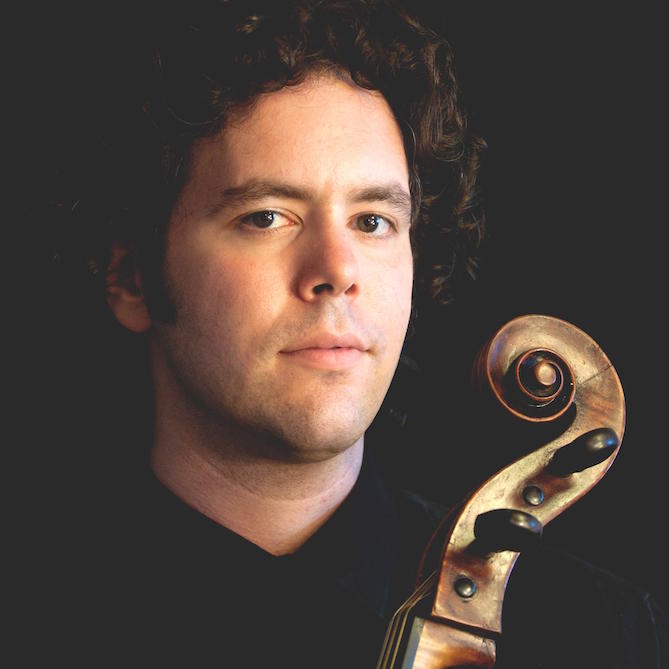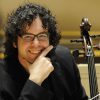
What Makes a Baroque Cellist
Guy Fishman
I was once accused of playing like a baroque cellist. It was most certainly an accusation, and I don’t know what the coach was hoping to achieve by framing her opinion of my playing in such terms. Suffice it to say I was insulted, and the funny thing is, I don’t even know why. Okay, I was playing Brahms’s F major sonata, on a cello that had an endpin and two steel strings (the other two were wound gut). My partner was playing a Steinway M. Furthermore, and perhaps most revealing, is the fact that by the time I was being coached on this piece, during my second year of doctoral studies at New England Conservatory, I had already won a position with Boston’s Handel & Haydn Society, the nation’s longest continuously-running arts organization and a leader in period performance. I am now their principal cellist and am deeply involved in period performance, so it’s not as though the coach was comparing my playing to what I felt was some horrific affront to good taste (more on that at a later entry). Quite the contrary – I liked “baroque” playing! I wanted to be a “baroque” cellist, and I was already finding some professional recognition as one. So what was it that hurt my feelings in her comments? Was it that a cellist performing Brahms shouldn’t sound “baroque?” Well, what should he sound like, then? And, after all, what does a “baroque” cellist sound like?
Paul Katz recently did me the enormous and humbling honor of asking me to add to this incredible website. As we were tossing possible ideas back and forth, he said, “Why don’t you start by writing about what it means to be a baroque cellist?” It didn’t take much thinking on the matter to bring me back to the aforementioned incident. The hurt is long gone now, but that question, “What is a baroque cellist?” keeps nagging at me. In bringing it up Paul unveiled a quandary that is akin to a great philosophical question. Answering it will not necessarily reveal a visage of the human condition hitherto inaccessible, if one can answer it at all. And that is, in fact, the point: a great question doesn’t always lead to an answer; rather, it inspires further thought, usually by way of more questions.
And that is, poor reader, all I have to offer you at the moment. More questions. I can pretend to answer some or all of them, but my liberally-oriented mind argues itself out of the position before I finish typing it. I am left feeling disingenuous, at least in an academic sense. What would I say? “A baroque cellist is one who vibrates little or none at all!” Well, that could also describe Joseph Joachim, the man who premiered Brahms’s violin concerto, and probably almost every string player of note from his generation and the one before. They can hardly be called “baroque” players. How about, “A baroque cellist plays on gut strings!” Pablo Casals and Jascha Heifetz, to name just two of the most prominent players who continued using gut strings well into the 20th century, would shudder if I suggested their strings made them “baroque” players. So would David Soyer, my teacher: When I dared to mention my curiosity of and interest in period performance, Mr. Soyer sneered and said, “What? You want to be like one of those clowns with the tennis shoes?” (More on that at a later entry, too.) I should mention that Mr. Soyer loved his unwound gut strings (and that I loved Mr. Soyer).
What else? “A baroque cellist uses no endpin!” Neither did David Popper, Alfredo Piatti, or Robert Hausmann, even when he premiered Brahms’s Double Concerto. So what is it, then? We know it when we hear it, and nowadays we hear it more and more, at the hands of some very prominent “modern” players who, every now and then, cross over to the dark side, leave their Larsens and endpins at home, and take up a period instrument. Yo-Yo Ma has recorded three albums of Vivaldi and Boccherini on gut strings, and I saw him play a Beethoven sonata on a classical set-up. Pieter Wispelwey has dual careers as a “modern” and “baroque” cellist (so did Anner Bylsma, though he never strung up with steel. Yet another post to follow on that one). I recently read two articles each discussing a cellist taking up a period instrument, both in the New York Times: One was a review of Carter Brey’s performance in New York of the Bach Suites; the other was an interview with Matt Haimovitz about his recent experiments with gut strings.
There are many, many more cellists like them, of equal or lesser prominence, and I comfortably belong to the latter category. So did my “baroque-ness” spill over to my Brahms? Does that mean that I didn’t vibrate every note, or that I let some air into my sound here and there, or that I searched the sources for a version of the work that I felt represented Brahms’s intentions? And if I did, is that not what I would want to achieve as a “modern” cellist? Or let’s suppose the accusation really was meant to be derogatory, and the coach thought my sound was thin and flimsy, or that I played badly out-of-tune, or that I chopped up my phrases in an unnatural manner, to name some of my favorite (and, let’s face it, ridiculous) condemnations of historically-informed performance as a monolith. If that were so, do baroque cellists have thin and flimsy sounds, all of them? Are they all unmusical and technically inept? Are there no “modern” cellists towards whom a particularly mean-spirited critic could lob these charges at, as well?
I began this entry by citing Brahms and I mentioned him twice further, when noting the players Joseph Joachim and Robert Hausmann, who were the most important string players in his circle. I don’t think I did so by chance. For me, and for many of us, Brahms sizes up as an arch-Romantic. My Apollonian tendencies endear him to me more than Wagner, for instance, but as their music was being heard during the same period and in the same general geographic region, I must ask: If Brahms (and Wagner, by inference) was being performed most famously by players who did not vibrate continuously, who used gut strings, and who did not use an endpin, in Hausmann’s case, then couldn’t the question that is asked alongside “What is ‘Baroque’?” be “What is ‘Romantic’?” Could we not ponder, “What makes a ‘modern’ cellist?” as much as we ask “What makes a ‘baroque’ cellist?” And would the answers to either or both be useful, or would they amble too closely accusation?
I promised more questions, and I believe I’ve delivered on that promise. But I also submitted the possibility of further thought, and if you’ll indulge me, I will present what musings I can conjure in a series of entries on the topic, to follow.
Subjects: Baroque, Historical
Tags: academic, Anner Bylsma, Bach Suites, Baroque, Beethoven, Boccherini, Brahms, Carter Brey, cellists, cello, cellobello, critic, curiosity, David Soyer, dual careers, endpins, experiments, gut strings, historically-informed performance, interest, Jascha Heifetz, Matt Haimovitz, modern playing, New York, Pablo Casals, Paul Katz, performance, possibility, prominence, teachers, Vivaldi, Yo-Yo Ma
